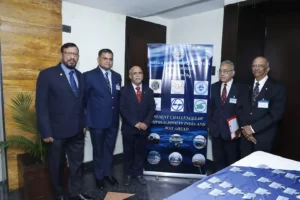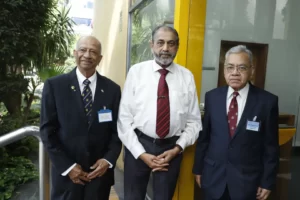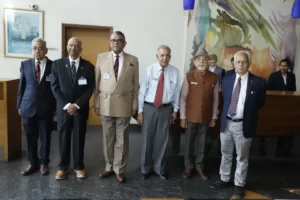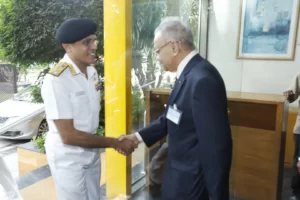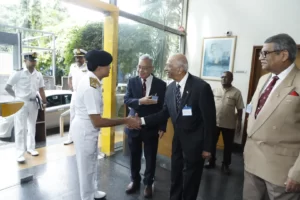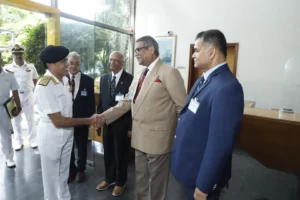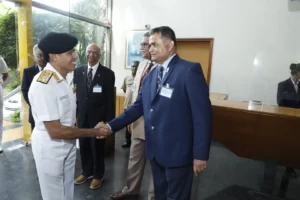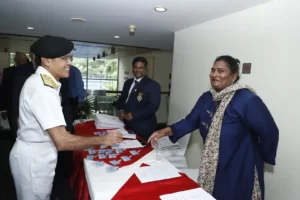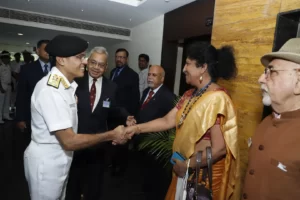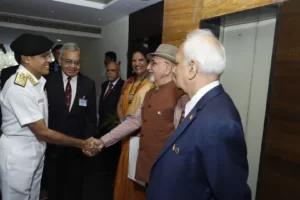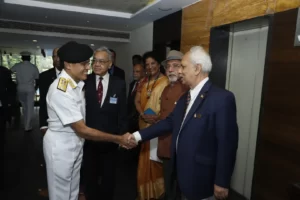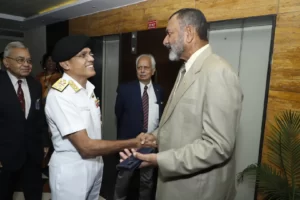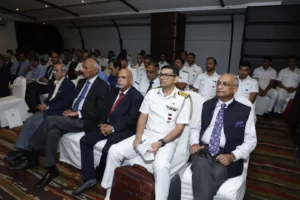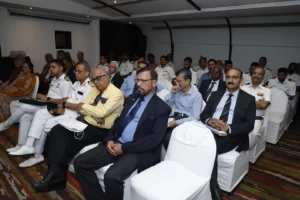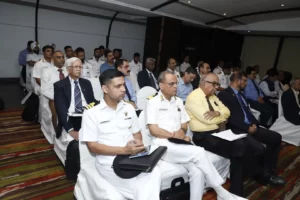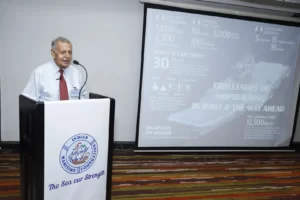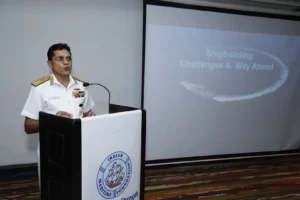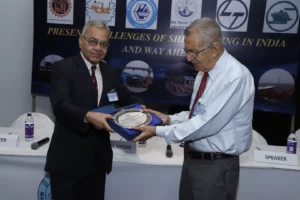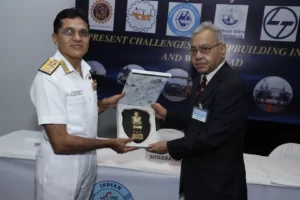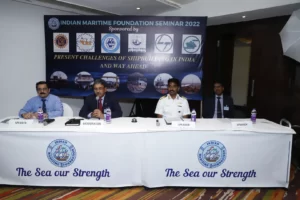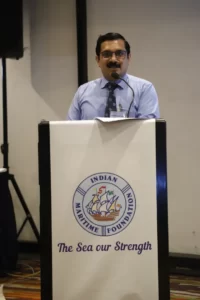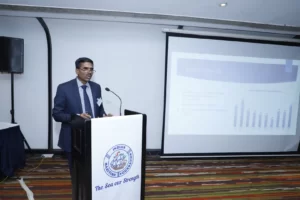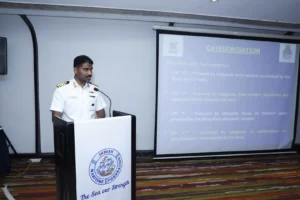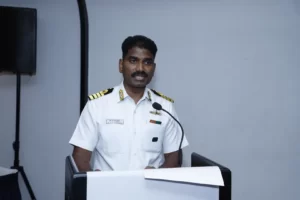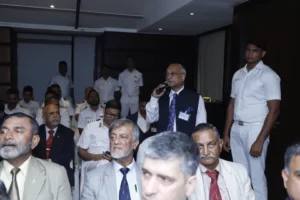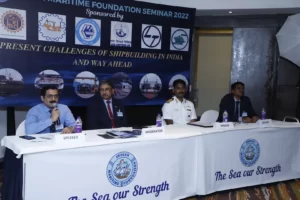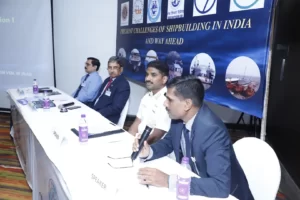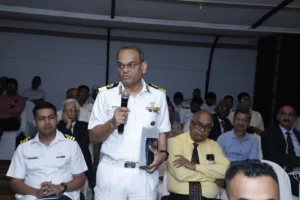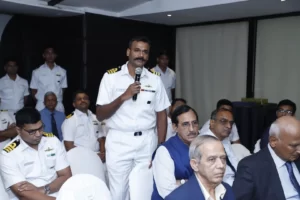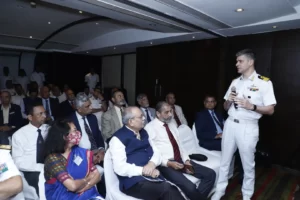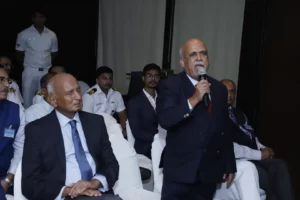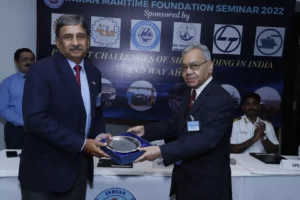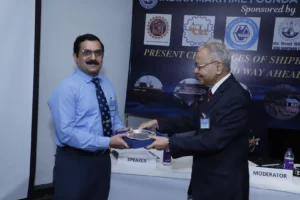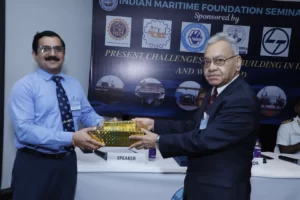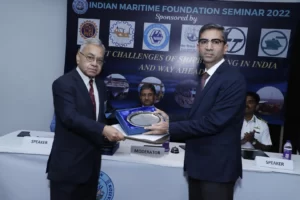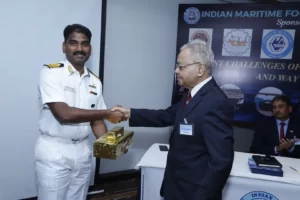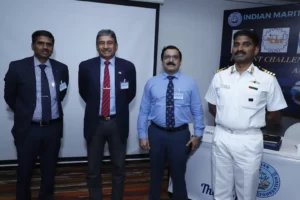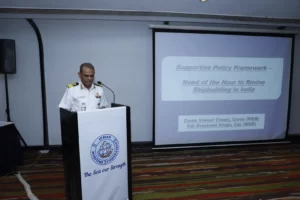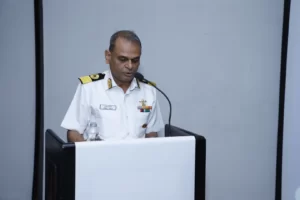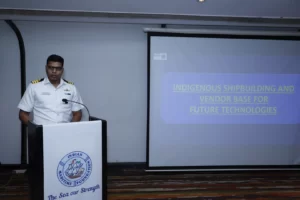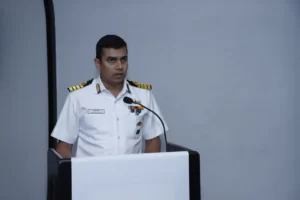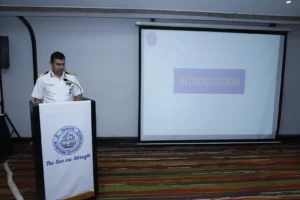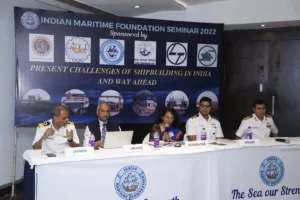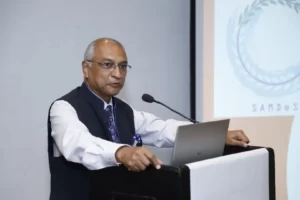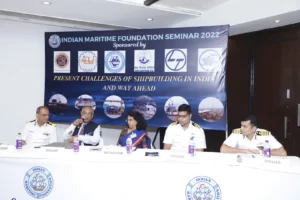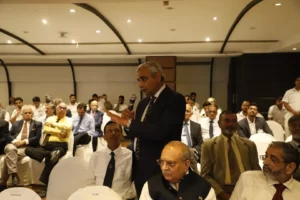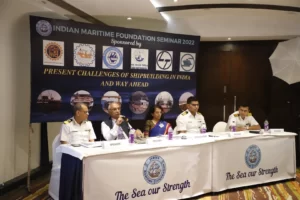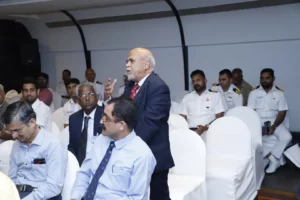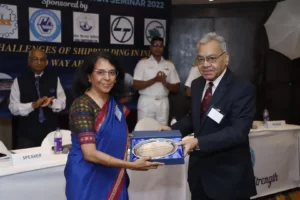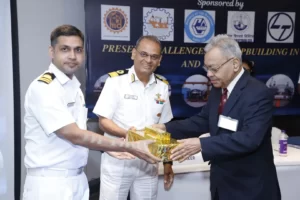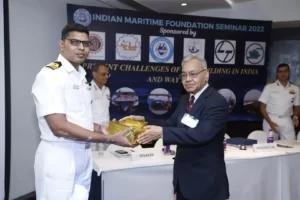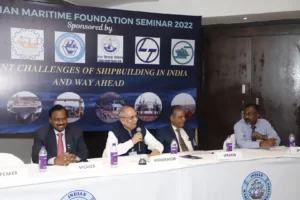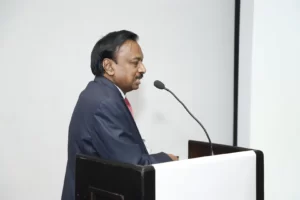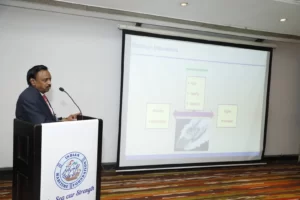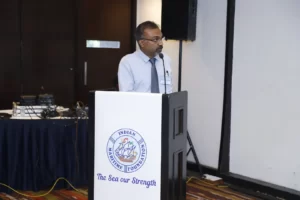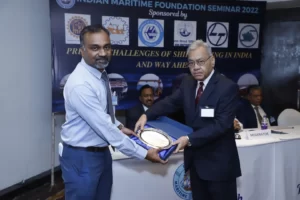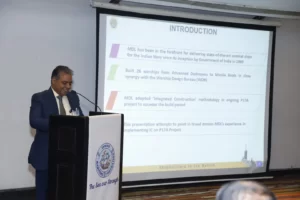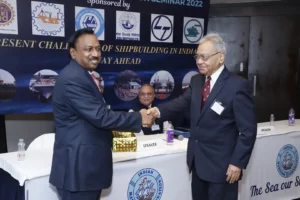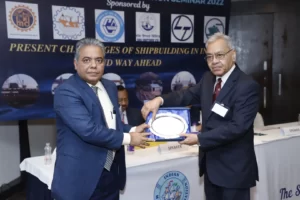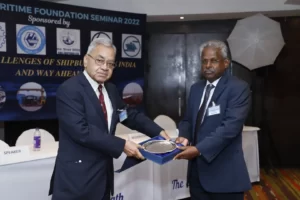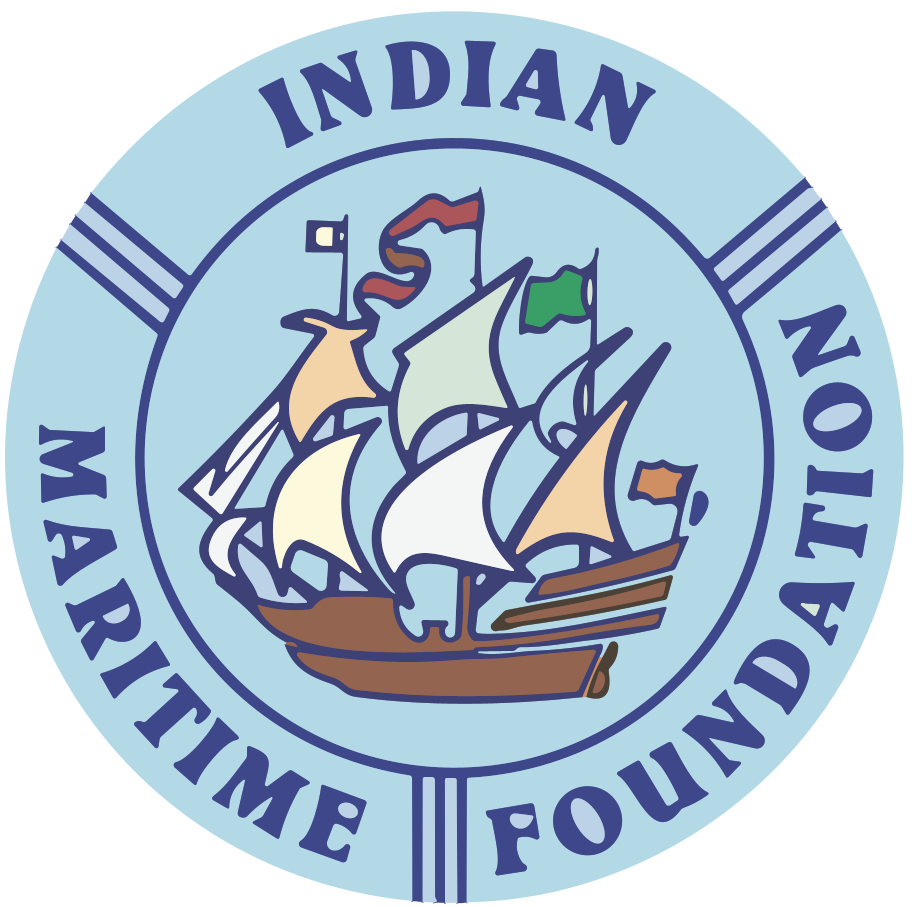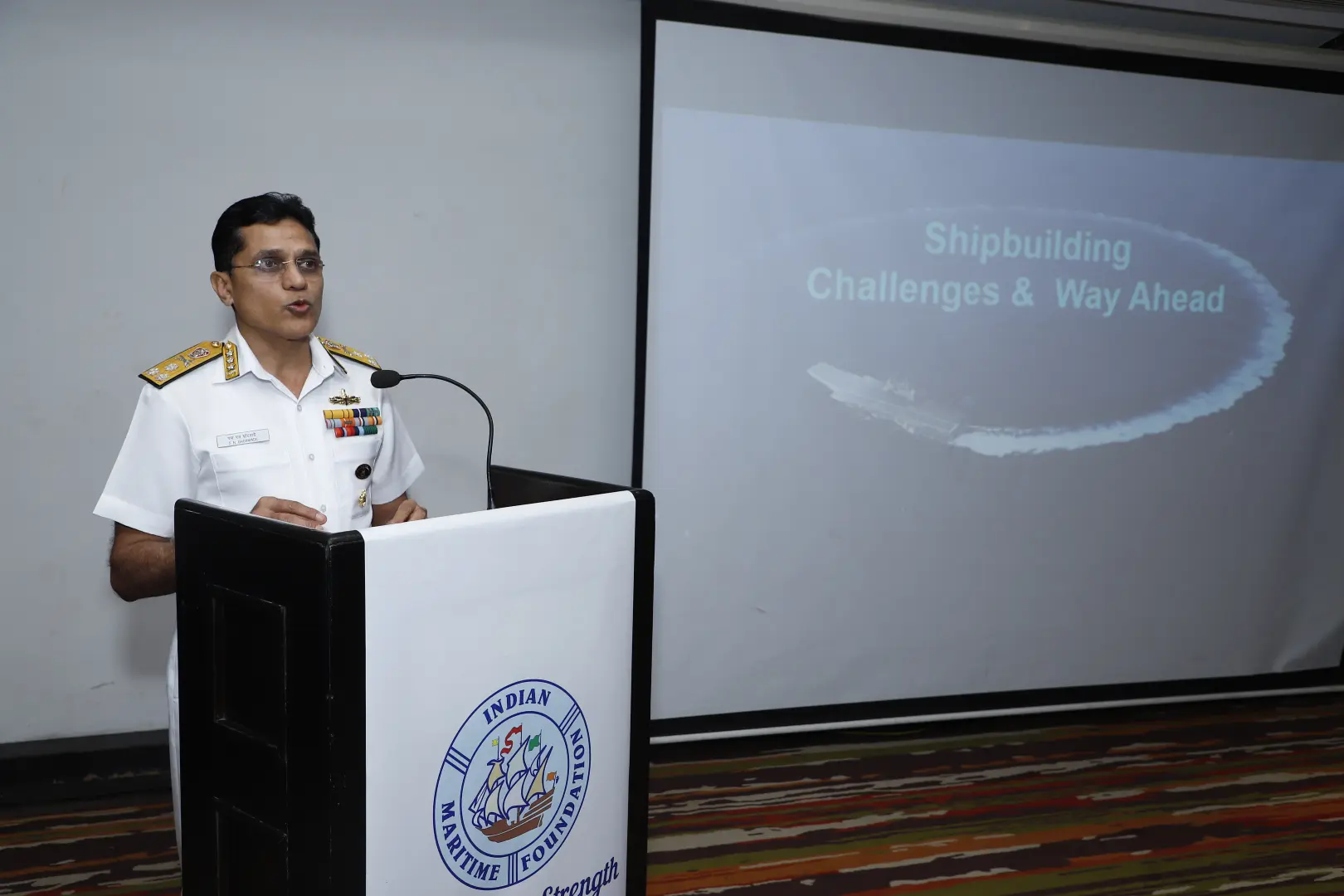
Annual IMF Seminar 2022
“Present Challenges of Shipbuilding in India and Way Ahead”
The Annual IMF Seminar 2022 on the theme “Present Challenges of Shipbuilding in India and Way Ahead” was held at the Central Park Hotel, Pune on 15 Sep 2022. Vice Admiral Satish Ghormade, PVSM AVSM NM ADC, Vice Chief of Naval Staff, was the Chief Guest on the occasion and delivered the Keynote Address. The Seminar commenced at about 9.30 a.m. with the singing of the National Anthem. A report on the Seminar is placed below.
- Welcome Address
- Inaugural Address
- Keynote Address
- SESSION I: Challenges for Shipbuilding in India (1100-1230 Hrs)
- SESSION II: Policy Framework and Reforms (1330-1530 Hrs)
- SESSION III: Way Ahead to Enhance Capability, Capacity and Competitiveness of Indian Shipyards (1545-1705 hrs)
- Concluding Remarks
- Vote of Thanks
Welcome Address
Capt Anand Dixit, President IMF started by welcoming VAdm Ghormade and gave a brief introduction of the VCNS. He then welcomed all the sponsors’ representatives from MDL, L&T SB, GRSE, CSL, GSL and SHOFT Shipyard and thanked them for their support in conducting this seminar. He welcomed the three moderators: Vice Admiral DM Deshpande (Retd), Dr Malini Shankar, VC IMU and Shri Jayant Patil VP, L&T Defence as well as all the guest speakers. He also welcomed a number of senior serving and retired – both defence and civil service – officers, representatives of shipyards and defence industries, officers of the Merchant Marine, academics and professionals to the seminar. He ended with a brief overview about the IMF and its scope of activities and facilities.
Inaugural Address
The Inaugural Address was delivered by VAdm Vinod Pasricha PVSM AVSM NM, IN (Retd) and a member of the Combined Study Group. He began with a peep into history, going back nearly 5000 years to the Indus Valley civilisation. He described how the Indian Navy had evolved from the British period and said that it was the vision of our forefathers after Independence which had resulted in the Navy being what it was today. He also spoke about the evolution of defence shipyards and their contribution towards indigenisation. He also recommended some measures to improve India’s shipbuilding potential, problem areas, initiatives that were needed; as well as those which had recently been announced. He bemoaned the fact that India had only 2% of the world’s maritime trade. However, in defence shipbuilding, India now built and exported naval ships to other countries and was also one of only 5 navies in the world, which could build aircraft carriers. He recommended drastic changes in the taxation policy for the shipbuilding industry to compete globally. Lastly, he showed a slide indicating the command the Indian Navy enjoyed in the Indian Ocean, owing to its unique geostrategic location and said that no other regional power could match India in this regard.
Keynote Address
The Keynote Address was delivered by Vice Admiral Satish Ghormade, PVSM AVSM NM ADC, VCNS. At the outset, he said that the theme of the seminar was extremely relevant and expressed confidence that it would work as a springboard, to improve the shipbuilding industry in India. He said that naval shipbuilding had been a success story and resulted in the Indian Navy’s transition from a buyers Navy to a builders Navy, and showed our commitment towards ‘atma nirbharta.’ While the ‘float’ and ‘move’ components had a high degree of indigenous content, the Navy was now working with DRDO, DPSUs, etc to improve the ‘fight’ component as well. However, commercial shipbuilding in India had been struggling. Some problem areas were absence of a centralized body, suboptimal development of ancillary industries, lack of a shipbuilding ecosystem (including ship design) and a long-term perspective plan; and financial barriers such as high interest rates on loans and taxation. As the ‘way ahead’, he proposed establishment of a Dept of Shipbuilding at MoSPW, greater collaboration between shipyards, creation of maritime clusters, formation of a National Shipbuilding and Shipping Finance Corporation and benchmarking efficiency of shipyards. In conclusion, he reiterated the importance of shipbuilding towards nation building and assured all of Navy’s focus on indigenous ship construction and capacity development.
SESSION I: Challenges for Shipbuilding in India (1100-1230 Hrs)
Capt P Sunilkumar, IN (Retd), CGM GRSE covered the topic ‘Nurturing Shipbuilding Ecosystems in India towards becoming a Global Player.’ Some challenges identified by him included a long drawn-out procurement process and supply chains, lack of skilled labour, lack of affordable financing, limited defence industrial base, infrastructure and in-house R&D facilities, and a domestic ancillary industry. He saw as the way ahead more collaboration between shipyards, funding through a separate financing scheme, elimination of regulatory hurdles, and refining labour rules. He concluded by saying that some disruptive changes were needed to put India on the global shipbuilding map again.
Cdr Saurabh Jain, IN (Retd), AGM (PL), GSL spoke on ‘Enhancement of Exports by Shipyards & Challenges to be Overcome.’ He stated that while exports had not been encouraging, they along with ship repairs were big opportunities for India to tap and recommended a long-term partnership with countries having upcoming defence hubs. Challenges included lack of capacity in building ships over 10,000 tonnes, time and cost overruns, inexperience in bidding for international orders, and lack of strong ancillary industry. He recommended leveraging DAs, setting up a marine fund, encouragement of JVs/ ToT, adoption of multi shipyard–modular block build strategy and integrated construction techniques, coordination with academia and more autonomy for DPSU shipyards by Govt.
Capt CHV Sudhakar of INS Shivaji spoke on “Challenges in Integrating Cat ‘C’ Items in Warship Building.” He stated that management of CAT ‘C’ items was a bottleneck affecting projects, causing delays, and compromising equipment functionality. Challenges faced by shipyards included unreliable NABL lab certification, inexperience in interpretation of RT films, and too broad specifications for RT. He recommended identification of reputed NABL accredited labs, developing in-house capability for analysis of RT films, and setting up of type testing facilities by the shipyard itself. He also recommended strengthening the QA organisation and streamlining its functioning, ensuring adequate shelf life of components, and concluding rate contracts with firms for supply of Critical Cat ‘C’ items.
SESSION II: Policy Framework and Reforms (1330-1530 Hrs)
Cmde Vineet Tiwari, Warship Design Bureau spoke on ‘Policy Framework – Need of The Hour to Revive Shipbuilding in India.’ He said while there were some ‘green shoots,’ Indian commercial yards were still not as competitive as major shipbuilding nations such as South Korea and China. Some short-term recommendations included formation of an ‘Apex National Authority on Shipping and Shipbuilding’ under PMO, formulation of a 30 year ‘National Shipping and Shipbuilding Strategy’ and a ‘National Shipbuilding and Shipping Finance Corporation’ He stated that shipbuilding should be prioritised and a clear vision and sound policies were needed to achieve self-reliance and also boost exports.
Cdr AM Jaffer Sirajuddin of DME spoke on “Indigenous Shipbuilding and Vendor Base for Future Technologies.” He elaborated on problems regarding vendor base for marine propulsion systems, in-house design capabilities, propulsion system integration, and lack of ancillary industry. He listed a number of advanced technologies that were being considered by the IN and measures to enable indigenous development of these technologies in accordance with extant policies. He also suggested a few policy changes to ensure proper vendor qualification and equipment induction.
Capt Mainak Mishra, DWE spoke on ‘Weapon Indigenisation in IN – Challenges and Way Ahead.’ He said greater weapon indigenisation would mitigate trade deficit, overcome supply chain issues, reduce dependence on foreign OEMs and ensure hardware and software integrity. He listed various impediments faced as also Govt initiatives. He suggested the way ahead as being absorption of technology, collaboration, hiring the right people, diversification of supply chain, advance planning, realistic QRs, and cadre continuity. He stated that the Indian government was seized of the matter and reasonable progress has been achieved. To take the initiative forward, the Indian Navy would need to synergise its efforts with industry.
Cmde Sujeet Samaddar NM, IN (Retd) spoke on “Energising India’s Shipbuilding Industry: The Pedestal View.” He stated that Indian coastal shipping was underutilized and EXIM shipping had also gone down. He proposed a three-pronged approach comprising atma nirbhar vanijya (more Indian ships carrying domestic trade), swadeshi punji (low-cost credit by a National Bank for Shipbuilding and Shipping Development (NABSSD)), and atma nirbhar poth nirmaan (15-year shipbuilding plan for commercial ships using standard designs). He said that India needed a fleet of about 1353 ships at a cost of ₹1,60,000 crores over a 10-year period. He also spoke about ‘stapled debt’ and a sunset clause on cabotage. He summed up his talk through the ‘pedestal view’, in which the ‘passage plan’ involved industry stakeholders, ‘winds and tides’ involved assessing favourable and unfavourable factors and the ‘sailing’ part was the push to be given by the concerned ministry.
Following the presentations, the Q&A session commenced and saw a number of questions being put to the panellists by the audience members as well as comments. During her Summing Up, the Moderator shared four points. Firstly, maritime clusters should be properly defined and supported by all stakeholders. Secondly, there should be more partnerships and collaborations. Thirdly, financial assistance should be beneficial to the recipient. Lastly, she suggested having a conclave of Navy and maritime entrepreneurs.
SESSION III: Way Ahead to Enhance Capability, Capacity and Competitiveness of Indian Shipyards (1545-1705 hrs)
Shri Jathesh Chandra of CSL spoke on the topic “India as a Hub for Niche Commercial Ship Building.” He said that India could tap into opportunities in niche shipbuilding fields and elaborated on some new propulsion technologies that were being researched worldwide. Of these, battery power was suitable for short duration voyages only, but hydrogen and ammonia had better potential to power ocean going ships. He also said that CSL has initiated two pilot projects on fuel cells and autonomous vessels. Aspects which needed focus included improving quality and numbers of equipment suppliers, cost competitiveness and design and R&D facilities, improving operational excellence through Industry 4.4 and Digital 4.1, attaining excellence through digitization, and financing for Capex.
Cdr KS Nathan (Retd), VP L&T Shipbuilding spoke on “Indigenous Warship Building – Modular Construction & Digital Techniques.” The thrust of his talk was on these two major methods. Modular construction reduced the requirement of outfitting at module / block level by as much as 80%. Use of digital techniques could enable construction using technologies such as BDA, cloud computing, IoT, VR/AR, simulations, etc. collectively called “Industry 4.0” / “Shipbuilding 4.0”. This achieved vertical integration in the shipyard and horizontal integration between customers and vendors. The aspects of Environment Health and Safety (EHS) were also important and could be done using digital techniques too.
Shri Biju George, Dir Shipbuilding MDL spoke on “Technology Upgradation and Capability Enhancement in Warship Building -MDL Experience in Integrated Construction in Association with Fincantieri.” He said the ‘conventional’ (sequential) approach to shipbuilding which MDL had been following was inefficient compared to the ‘Integrated Construction (IC)’ method. He described how MDL had got into collaboration with M/s Fincantieri using the IC methodology and elaborated on how this had helped them in the construction of the new P17A ships by saving on cost and time overruns. However, for the process to be successful in India, there should be fewer procurement delays, creating of a good vendor base and fine tuning of the ecosystem by WDB.
Concluding Remarks
In his Concluding Remarks, Shri Patil highlighted some stark differences in policies and bids offered to DPSU and Private shipyards in the past. While the number of vessels built by private shipyards were more, they cost much less vis-a-vis the larger vessels built by DPSU shipyards. However, he added that in recent years more incentives had been offered to private shipyards as well including allowing them to bid for ‘Buy Global’ projects. He also spoke about collaboration between shipyards through either a PPP or a JV and said they were necessary for cost savings and efficiency. He also narrated a case study of a global bid offered by the UK to 22 shipyards which showed that the shipbuilding process had matured considerably with more interaction between customer and shipyards and even the customer wanting the shipyards to generate profits.
Vote of Thanks
The Seminar ended with a Vote of Thanks by Cmde Ajay Chitnis, SC NM (G), Vice President IMF. All the speakers, moderators and sponsors were also presented mementos by President IMF.
